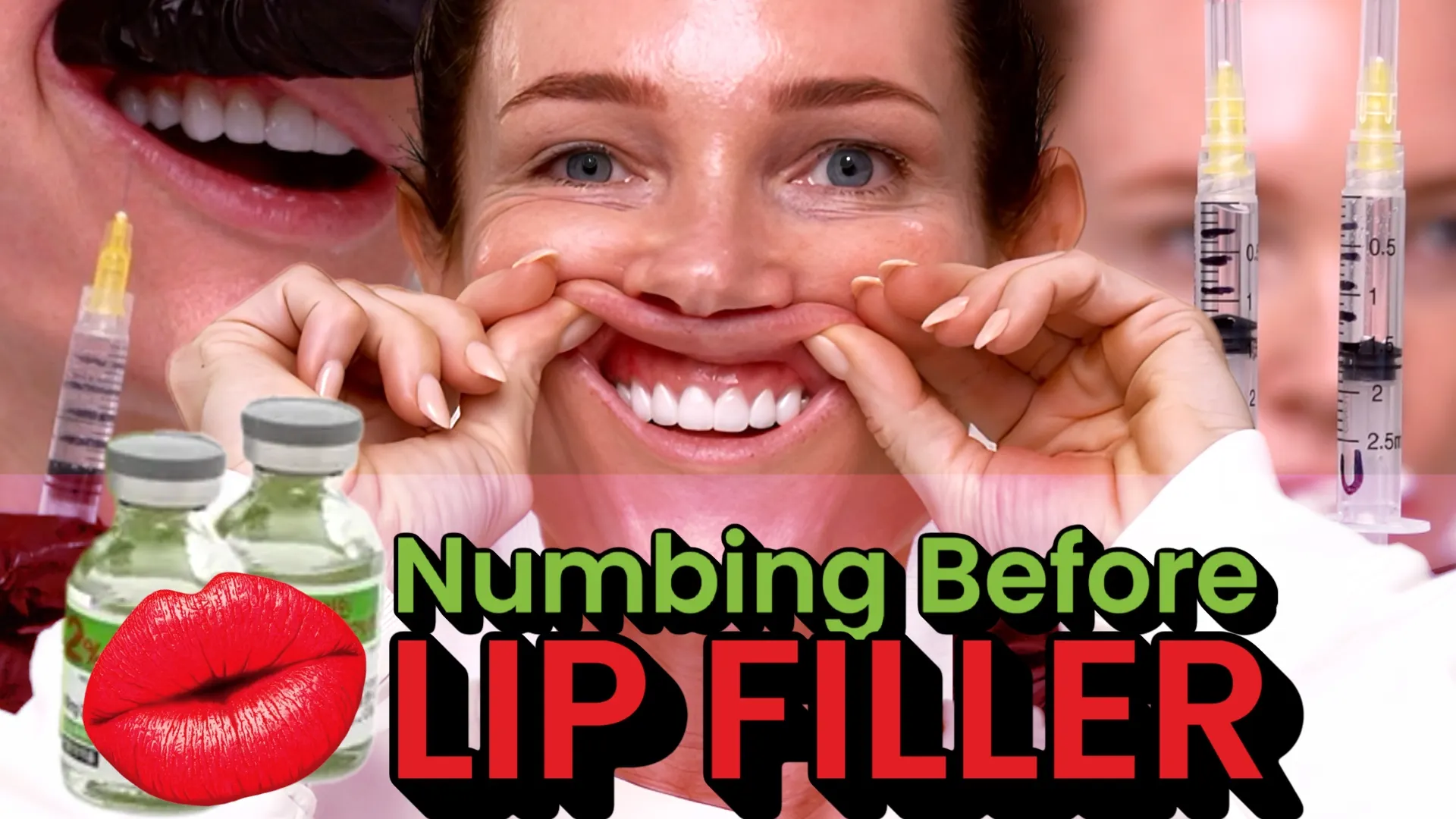DISCLAIMER: This post and video are for educational and informational purposes only. Not medical advice. Does not replace in-person training. Always consult a licensed medical professional regarding anatomy, dosing, risks, and whether this is appropriate for you. Do not exceed a provider-calculated maximum dose of lidocaine.
Watch the Video
Why a “Lip Ring Block” vs. a Full Dental Block?
If you’re prepping for lip filler, a targeted mucosal infiltration (often called a “lip ring block”) can provide short-duration lip numbness without the multi-hour effect of classic dental blocks. Great when you want comfort for lip work and a faster return of sensation to evaluate symmetry/movement.
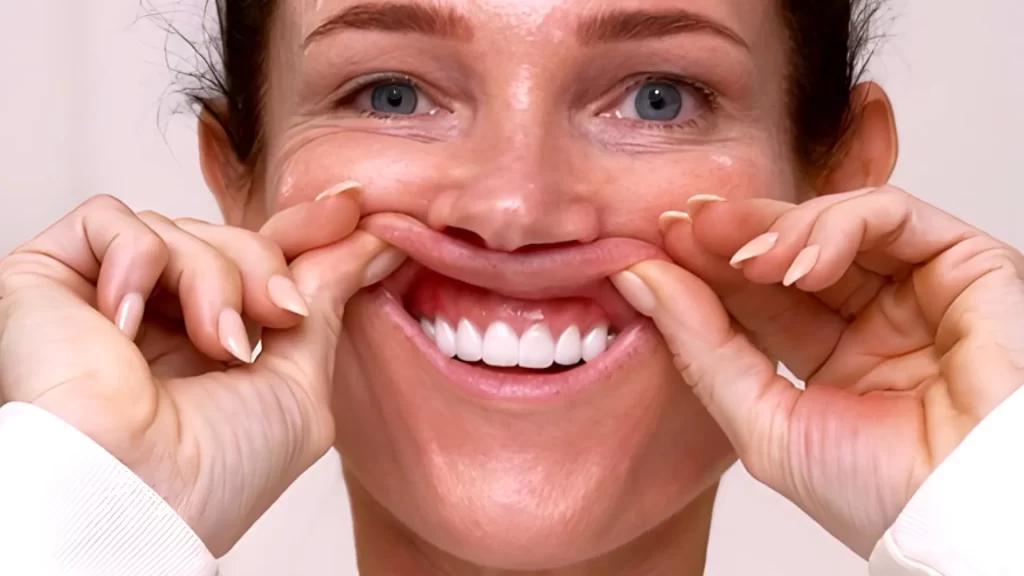
Front view of lips and inner oral mucosa for educational lip ring block overview.
Safety First (Non-Negotiables)
- Use aseptic technique; know where not to inject and what reactions are expected vs. concerning.
- Have a plan for adverse events (vasovagal, allergy, local complications).
- This post does not provide patient-specific dosing or instruction.
What I Used (Context Only)
- 2% lidocaine (no epinephrine)
- 30G ½-inch needles
- 2–3 mL syringes
- Topical benzocaine 20% (tested in session 1)
- Gloves, gauze, mirror, timer
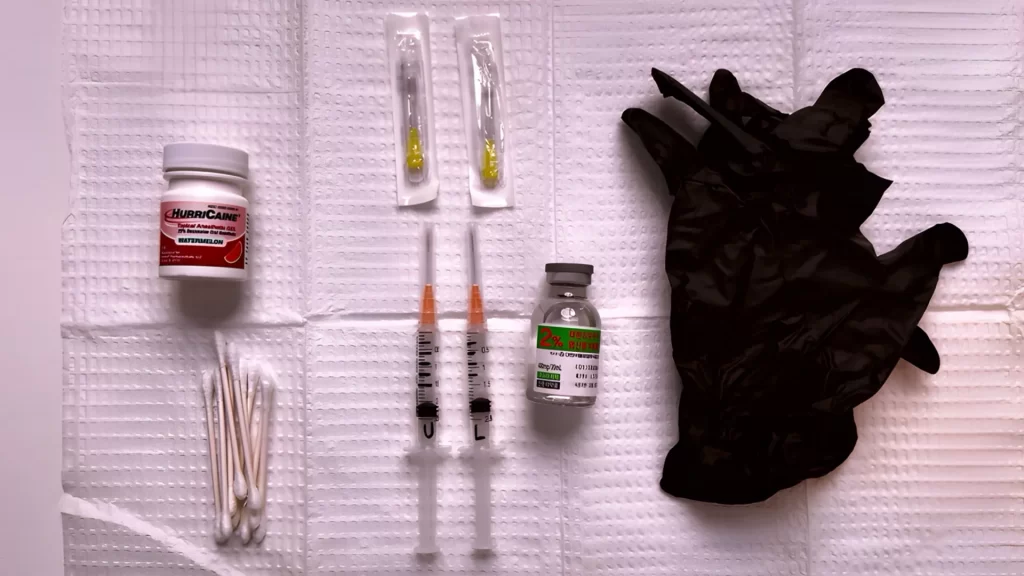
Flat-lay of tools for educational demonstration: 20% Benzocaine, 2.5mL syringe, 30G 1/2” needle, 2% lidocaine, gloves, Qtips.
Mapping Overview (High-Level, Not Step-by-Step)
Upper lip: multiple small mucosal infiltrations spaced between canines; center aligns with the upper labial frenulum.
Lower lip: placements aligned near canines/mental nerve region; better results (for me) when biased toward the soft-tissue corridor (session 2).
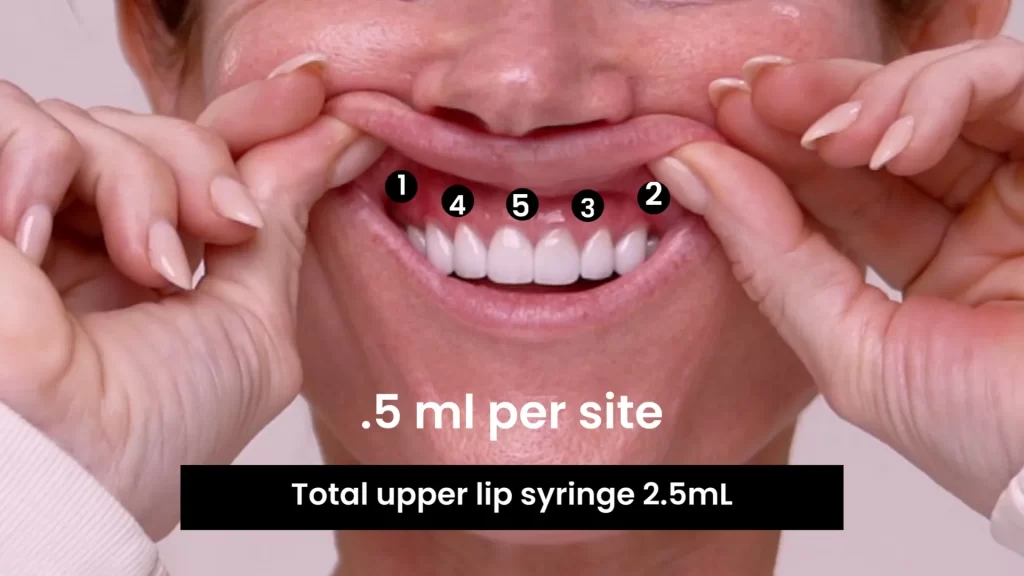
Upper lip conceptual zones between canines for educational mucosal infiltration mapping.
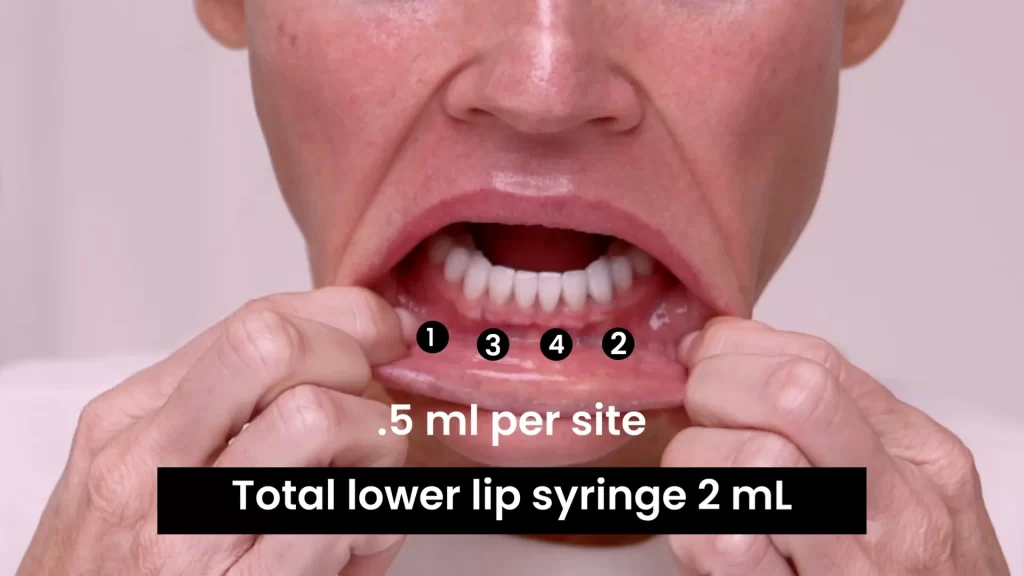
Lower lip conceptual soft-tissue zones aligned with canines for educational mapping.
What I Tested (Two Sessions)
Session 1 (with topical):
- Pros: reduced initial sting.
- Cons: reduced tactile feedback, harder to sense depth/plane. Upper lip numbed better than lower.
Session 2 (no topical):
- Pros: better tactile feedback; upper lip again excellent; lower lip improved when targeting the soft-tissue corridor(not straight down at the mucosal junction).
- Expect a brief burn as lidocaine goes in; it fades quickly as numbness sets in.

Gloved hands with each 2.5mL syringes drawn up labeled with U for Upper and L for Lower.
How Long Did Numbness Last (For Me)?
- ~30–35 minutes of meaningful numbness, consistently best in the upper lip.
- Practical workflow: Stage your work — numb/complete upper lip first, then numb/complete lower lip, so nothing wears off before you get there.

Lessons Learned
If you’re DIY-curious, don’t. Seek professional training and follow your local regulations.
Topical first = easier tolerance, but harder depth sensing.
The injected area may burn briefly, then quickly numbs.
Upper lip mapping worked consistently; lower lip improved when I shifted into the soft-tissue corridor near canines.
Keep a timer so you manage the ~30–35 min window.
INJECTIONS
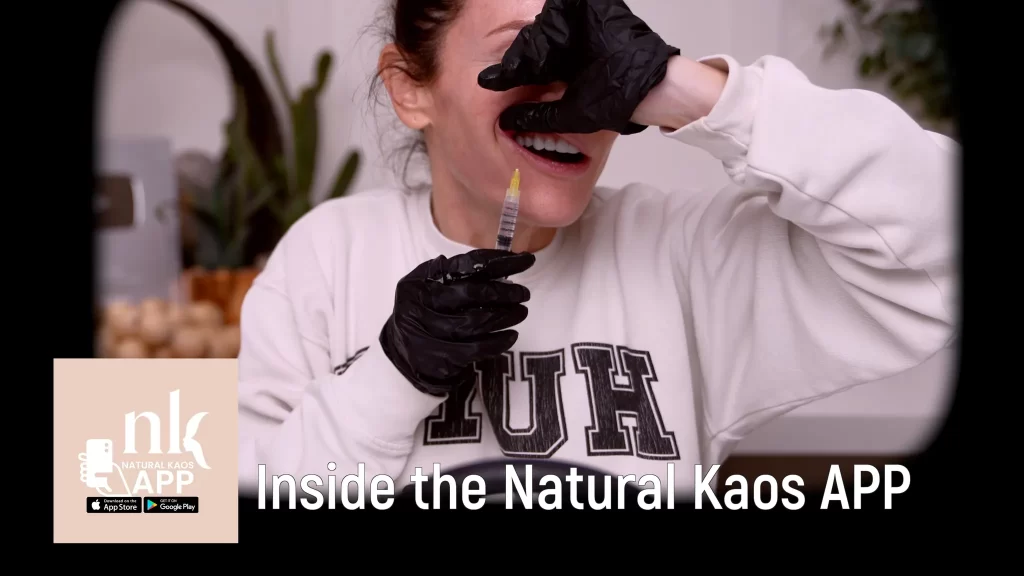
SKIN & WELLNESS APP Natural Kaos App
Join the Community
YouTube (Spa and Tell) — weekly lives + long-form videos
Product Sourcing
- 20% Benzocaine
- 2.5mL Syringes
- 30g 1/2 Inch Needles
- Gloves
- 2% Lidocaine code: KAOS10
- Dermal Filler Book
FAQ
How is a lip ring block different from a dental block?
Lip ring blocks target superficial mucosa for short-lived numbness; dental blocks target deeper branches and typically last much longer.
How long does numbness last?
My meaningful numbness was about 30–35 minutes (varies by technique and individual response). Always defer to your provider’s guidance.
Is epinephrine necessary?
Many avoid epinephrine for lip work due to vasoconstriction concerns. Discuss agent choice and risk/benefit with your provider.
Do I need to aspirate?
Protocols vary. Follow your professional training and local standards of care—your provider/mentor should teach if/when/how to aspirate.
Topical vs. no topical first?
Topical reduces sting but may blunt tactile feedback. I compared both approaches; choose based on professional guidance and your workflow.
What are the risks?
Bruising, swelling, soreness, allergic reactions, and rare complications. Do not proceed without professional clearance and an emergency plan.
Learn how a brief lip ring block compares to dental blocks. My timing results, mapping overview, comfort tips, and safety notes—plus video.
Internal Links
